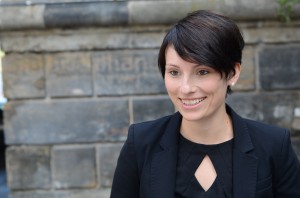
This article is about the customer community penguin manager John who is leading his customer penguin community through the four steps of the community lifecycle*. Within the article the reader will learn what customer community tasks a community manager has to do in the second step of the community lifecycle:: the establishment phase (learn more about our customer community approach here).
In my previous blog article about the inception phase, John the Community Manager Penguin literally took advantage of the penguin effect to reach a critical mass of users in his aquatic community. Now it’s important that he adapts his activities to the needs and requirements of the establishment phase, shifting the focus from a micro-oriented approach (directly contacting users, initiating discussions) to a macro-oriented strategy. I will explain in this article why this is important and how he makes the transition.
Nearly all communities pass through a community lifecycle that consists of the same phases:
Inception – Establishment – Maturity – Mitosis. This article will deal with the most important aspect in the establishment phase: engaging in macro-level activities.
John’s customer community is growing larger and larger. He still maintains his contacts with the penguins by sending messages, starting discussions and writing posts. But he’s slowly realizing that the customer community is becoming so big that he’s no longer able to contact each member personally. And on closer examination one sees that this isn’t even necessary. The community has reached a size where it should do this on its own. An emerging group of multipliers now perform these community tasks for John. Multipliers are those members who identify strongly with the customer community; they do lots of important things like getting discussions started, helping other members find their way around the site and winning new users.
John quickly recognizes the new situation and rethinks the activities that he had undertaken for the inception phase. He sees that it is now necessary to identify and support the multipliers. After all, they bring in new members and motivate existing ones. After a while, he notices that fish alone is not incentive enough for the multipliers to stay engaged; instead, they prefer to acquire different rights and privileges like being able to start their own multiplier group or ban penguins from the community for misconduct.
John also has to realign his strategy for acquiring new members. He no longer has the time to contact all potential new members personally. In fact, he needs to pinpoint his target group and divide it into subsets of penguins who have similar needs and priorities, while also developing a suitable marketing plan. The main questions he should ask himself are: Who is my target group, and how can I effectively reach them?
In this phase, John begins to organize regular events and activities in order to keep the customer community attractive to his penguins. He makes sure to plan both one-time and recurring events to provide users with not only a sense of regularity but also with new incentives to stick around. At this point at the latest, John should use gamification techniques to encourage members to engage in the community.
One thing that is extremely important is the community’s content. This should always be up to date and give users new insights into community-related topics. A tried-and-tested approach is creating content directly from the community’s members and activities. There is nothing most members would like more than to read about the community itself. John therefore publishes each week a blog article that introduces interesting penguins in the community. Who doesn’t like reading about himself or his friends? By taking this approach, John is able to create community-based content that prompts other penguins to visit the community, read the blog articles and make efforts to be featured in articles themselves.
He is also putting a lot of thought into the customer community’s strategy during this phase. He knows that it is necessary to constantly collect and evaluate data. Without such information, he can’t tell how the community is performing and whether it’s in good shape. What’s key here is not only gathering quantitative data like the number of active and inactive penguins, but also collecting qualitative data. One such qualitative metric is the so-called sense of community. This measures to what extent members feel they are integrated into the community and the community understands them, as well as how strongly members think they can influence the community. A healthy community has both: very active users with a strong sense of community. John compares the data on his community with his targets and can make adjustments if things aren’t developing as fast as he had hoped.
If John hadn’t adapted his efforts to the phase his customer community is currently going through, the aquatic community would have slim chances of achieving sustainable, long-term growth. Large numbers of his penguins would most likely get bored of connecting in the ocean water, because the community wouldn’t be offering anything new and exciting (events, activities, content) and wouldn’t be further developing itself (strategy). But John wouldn’t even notice this, since he wouldn’t be gathering and evaluating community data.
Summary
During the establishment phase, John needs to boost the number of members, make existing members want to stay in the community and keep developing the community’s overall features. In short, his community tasks include:
- Attracting new members and multipliers
- Motivating existing members to be active in the community through both special one-time and regularly recurring events and activities
- Ensuring members and visitors have an exciting experience through, for example, engaging content
- Further developing the community through the insights gained from the collection and evaluation of KPIs
- Creating a sense of community among the members
John’s customer community will eventually reach a point where only low growth and a modest increase of user activity can be expected; this is called the maturity phase. You’ll learn what community managers like John should do in this phase in my next blog article.
[hr]
About the author:
Sandra Brückner, who studied business informatics at the Technical University of Dresden, has worked as social business consultant since 2012. She recently joined the Berlin-based social business consultancy and technology provider Pokeshot///SMZ, where she leverages her extensive intranet and community expertise to consult organizations on how to optimize their change management and community management processes.
*The community lifecycle model presented in this article is based on the works of Iriberri, A. & Leroy, G. (2009): A Life-Cycle Perspective on Online Community Success and Millington, R. (2013): The Online Community Lifecycle.

Kommentare sind geschlossen.